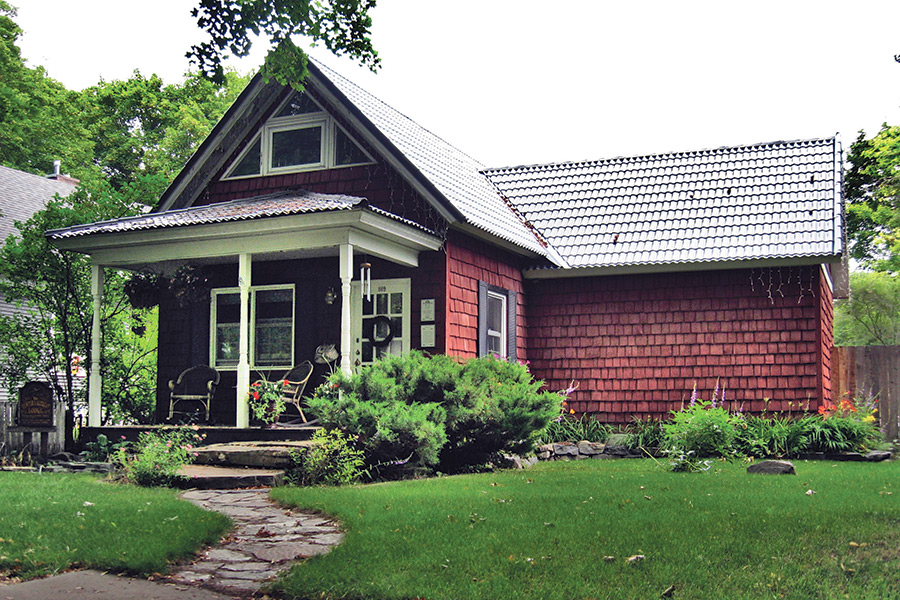If you stepped off the train at the Kalispell depot in the early 1900s, you would have noticed this was unmistakably the Flathead Valley, part of the West where a variety of folks came to settle.
And much like the people who came from far and wide, so too did the influences of early Kalispell architecture. The 800 block of First Avenue East provides an example of some of the diverse origins and inspirations of early Kalispell architecture – one with deep, Southern roots.
There are three, sister-like homes along First Ave. E. at 821, 817, and the Bardon/Barton House at No. 809. These three “shotgun-style” homes were built between 1903 and 1910.
After the Civil War, shotgun-style homes gained popularity throughout the war-ravaged South as they were simple, saved space, and allowed folks to rebuild with relative ease. The term “shotgun” (or “scattergun” depending upon your variety of vernacular) refers to being able to shoot a shotgun blast straight through these long, narrow houses, clear to the back, if fired from the front.
Shotgun-style homes also made sense for long, narrow lots of land, which were typical of many early railroad towns. You may have noticed that the lots along Main Street, First Avenue East and First Avenue West in Kalispell are long and narrow. And lots along the avenues to the east and west are typically just as long, but twice as wide (as originally intended by the Kalispell Townsite Co. in 1891).
Thus, building a long, narrow house on a long, narrow lot seems fitting. And whether the Bardon/Barton House was originally a “shotgun-style” house or a “railroad” house can be debated. Shotgun houses do not have hallways – however, railroad houses (much like early railroad passenger cars), typically have long, narrow hallways connecting the rooms.
Although such debate is moot as the Bardon/Barton House has since forsaken both styles and now resembles another popular home style of the era: the “post and wing” style residence (the front-facing gable is the “post” and the adjacent part is the “wing”).
Yet while the Bardon/Barton House has been renovated and transformed, it still retains its original, open front porch facing the street – a hallmark of its original design. In contrast, its two southernly neighbors (at 817 and 821 First Ave. E.), now each have a side entrance, which was a common work-around to the limitations of a shotgun-style house, wherein you entered through the front door, and had to walk through one room to the next to get from one end of the house to the other.
And much like the many Civil War veterans who made their way to the Flathead Valley, so too did the original shotgun-style architecture of the Bardon/Barton House.
Since then, the house has become part of the history of early education in Kalispell. Schoolteacher Mary Bardon lived in the home with owner and schoolteacher Florence Barton. Miss Bardon taught at Linderman School while Miss Barton taught at the Central School. The two lived together in the home from the late 1920s until the 1940s.
Thus, the name “Bardon House” on the National Register of Historic Places plaque seems to be a misnomer. At the least, it tells only half the story – and overlooks their likely innumerable corrections to their students and neighbors alike (“I’m Bar-Don, she’s Bar-Ton – vice-versa).
So whether it’s “railroad” or “shotgun,” Bardon or Barton, when it comes to confusion in history, appreciate it – especially since whether by origin or orientation, things may seem the same, yet be altogether different.
Jaix Chaix appreciates history and architecture. You can share ideas and facts with him at [email protected] or at facebook.com/flatheadvalleylandmarks. He is also the author of Death in the Valley: Odd Tragedies in the Flathead Valley, Montana 1887-1917.
